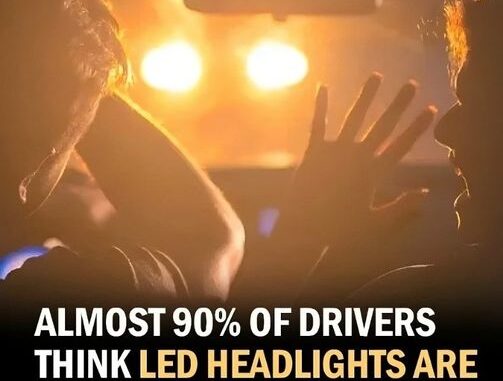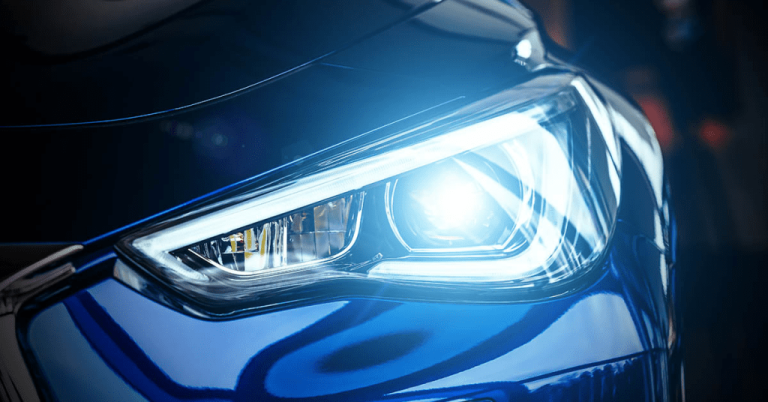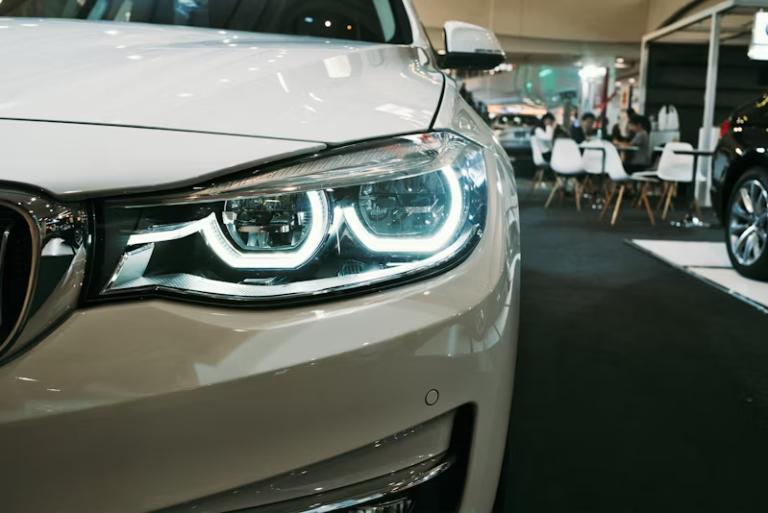
In recent years, LED headlights have taken the automotive world by storm, offering enhanced illumination and energy efficiency. But what was once hailed as a technological breakthrough has now become a source of frustration for many drivers. A significant number believe these lights are simply too bright, posing safety risks and creating discomfort on the roads. Let’s dive into this growing concern and explore potential solutions.

The Growing Frustration Among Drivers
LED headlights may illuminate the path ahead, yet for numerous individuals, they have diminished driving comfort. A survey conducted by the RAC in the United Kingdom indicated that 89% of drivers perceive these lights as excessively bright, while 85% believe that the glare has intensified over time.
This concern is not confined to the UK alone. In the United States, comparable grievances are prevalent. Victor Morgan, a mechanical engineer, performed independent assessments and discovered that the actual glare levels produced by LED headlights frequently surpass regulatory thresholds.
The Promise of LEDs: A Double-Edged Sword
When LED headlights first emerged, they were celebrated for their benefits:
Improved Visibility: Their bright, focused beams help drivers see farther and clearer at night.
Energy Efficiency: LEDs consume less power compared to halogen bulbs.
Longevity: These lights can outlast traditional bulbs by a significant margin.
However, these advantages come with unintended consequences. Their concentrated, piercing beams can be blinding for oncoming traffic, especially at night.
Misaligned Headlights: A Major Culprit
Mark Rea of the Light and Health Research Center emphasizes that improperly aligned headlights exacerbate the issue considerably. When vehicles, especially SUVs or trucks, have their LED lights incorrectly adjusted, the glare becomes more pronounced for vehicles that sit lower to the ground.
“Not every vehicle is affected,” Rea observes, “but approximately 20% exhibit excessive glare.” This misalignment hampers drivers’ ability to concentrate, thereby heightening the likelihood of accidents.
The Real-World Impact of LED Brightness
Reduced Reaction Times
Many drivers report slowing down on dark roads because of blinding LED lights. According to surveys, two-thirds of drivers admit to reducing speed to cope with the glare.
Night Driving Glasses on the Rise
The discomfort caused by LEDs has led some to invest in specialized night-driving glasses, which claim to reduce glare. While these might help, they’re more of a band-aid solution than a fix for the root problem.
The Need for Regulatory Action
Advocacy organizations and specialists are calling on regulatory authorities to reassess the regulations pertaining to headlight brightness. The National Highway Traffic Safety Administration (NHTSA) in the United States has been presented with petitions requesting a review of the maximum brightness standards for LED headlights.Mark Baker, president of the Soft Lights Foundation, articulates the prevailing concern: “Everyone is mystified by why they are being blinded.” Critics contend that existing regulations fail to sufficiently consider actual driving conditions.
The Global Concern Over LED Glare
While the LED headlight debate is heated in the U.S., it’s a worldwide issue. In the UK, 64% of drivers believe LED headlights are so bright that they increase the risk of accidents.
The consistency of complaints across countries highlights the need for international standards. A coordinated effort could ensure safer, glare-free driving experiences globally.
Potential Solutions for Safer Roads
Adaptive Lighting Technologies
A potential solution lies in adaptive lighting technology. These systems are designed to automatically modify the intensity and direction of headlights in response to varying driving conditions. For instance, the headlights can decrease in brightness when an approaching vehicle is identified, thereby minimizing glare.
Although this technology is available, it has not yet achieved widespread implementation. The high costs associated with it and the limited rate of adoption suggest that it may take several years before adaptive lighting becomes a standard feature.
Regular Headlight Alignment
In the meantime, vehicle owners should ensure their headlights are properly aligned. Regular maintenance checks can prevent misalignment, reducing glare for other drivers.
Stricter Manufacturing Standards
Manufacturers could play a role by designing headlights that balance brightness with comfort. Stricter standards for beam angles and intensity could mitigate the glare issue without sacrificing visibility.
The Role of Drivers in Minimizing Glare
While manufacturers and regulators work on long-term solutions, drivers can take immediate steps:
Check Your Headlights: Ensure they are properly aligned, especially if you drive a taller vehicle like an SUV or truck.
Use Low Beams When Appropriate: High beams are not necessary in well-lit areas and can worsen glare for others.
Be Mindful of Aftermarket LED Bulbs: Installing overly bright or improperly designed bulbs can exacerbate the problem.
Conclusion: Balancing Brightness with Safety
The introduction of LED headlights aimed to enhance driving safety; however, their intense brightness has resulted in unforeseen difficulties. As an increasing number of drivers express their apprehensions, it becomes evident that a more balanced solution is necessary.
To tackle this issue effectively, a combination of regulatory adjustments, advancements in technology, and heightened driver awareness is essential. This approach will help ensure that LED headlights provide adequate illumination without jeopardizing safety or comfort. In the interim, it is the responsibility of manufacturers, regulators, and drivers to collaborate in creating glare-free roadways that can be enjoyed by all.



